University of Mary Breaks Ground on New Engineering Facility, Sets Completion Date
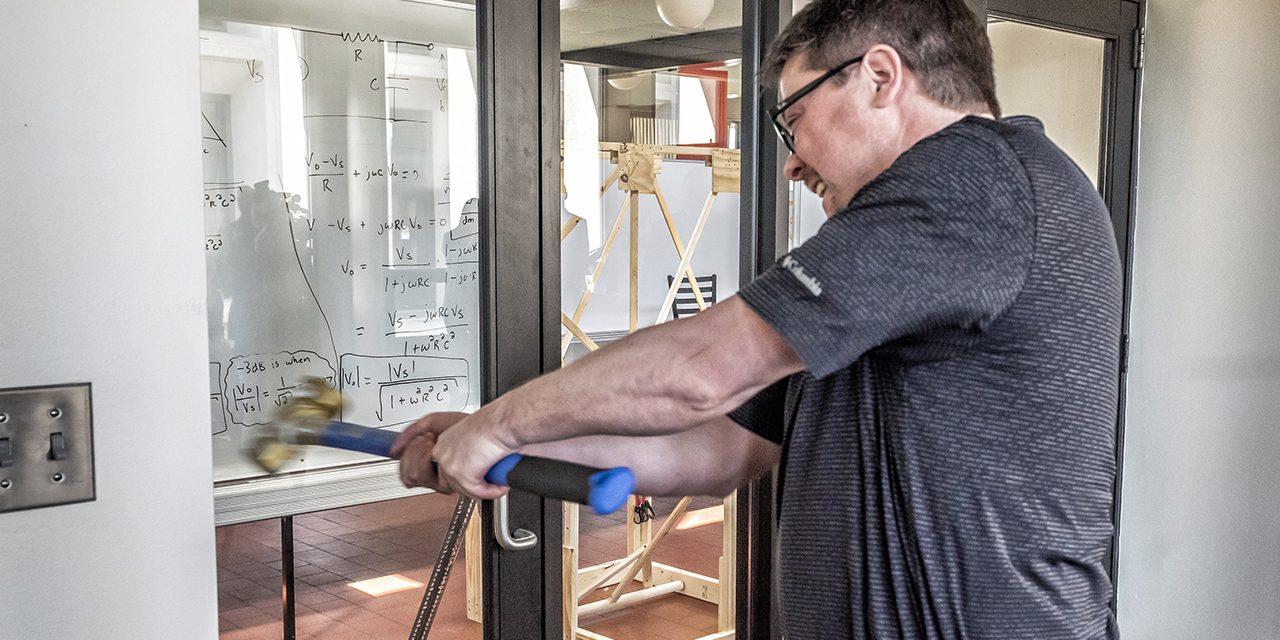
Initial findings of the North Dakota Workforce Development survey completed
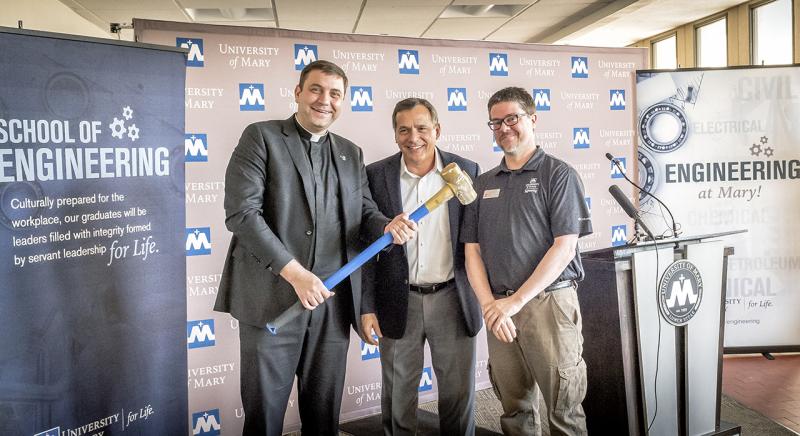
BISMARCK, ND—The University of Mary officially broke ground today on what will be the new home for its state-of-the-art engineering facility. The private Catholic university in Bismarck announced it has raised over $10 million to begin an aggressive renovation and repurposing of the old University Hall on north campus.
Dozens of faculty, students, donors, friends of the University of Mary, and representatives from local, regional and national engineering firms were on hand for the celebration.
“I must confess, as odd as that may sound, I was the first to question the need for such a robust engineering program,” recalls Shea. “I was quickly convinced otherwise of the need by many engineering firms across the state. They expressed how there is a shortage across North Dakota, especially western North Dakota, and America of not only good engineers, but engineers culturally prepared for the workplace. And just as our founding Sisters of Annunciation Monastery had done so many times since they began Mary College in 1959, we felt called to answer that need. So, to all of you: faculty; students; benefactors; alumni across the country; and those who have graciously given their time and resources—this is truly a memorable day thanks to you. With that, it is with great pride and honor to commence building of University of Mary’s new School of Engineering.”
From that point, University of Mary President Monsignor James Shea, Chris Curia, executive vice president of Energy Transfer, and Terry Pilling, director of Engineering at the University of Mary, made it officialby taking sledgehammers to the inside wall of the old University Hall building.
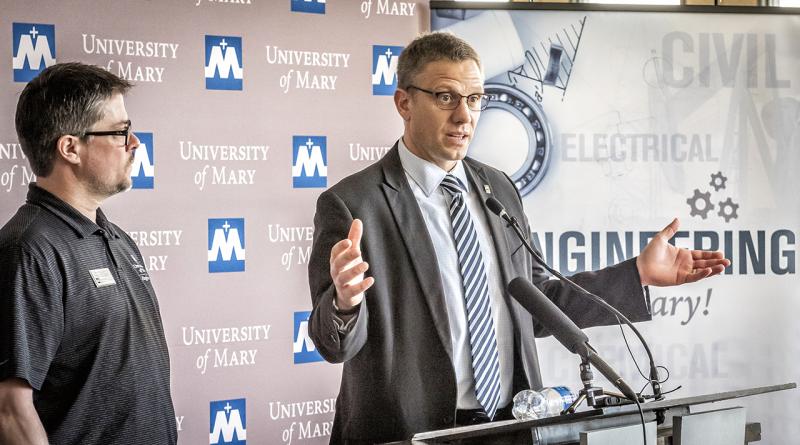
The University of Mary reached two-thirds of its fundraising goal for the new School of Engineering facility thanks to hundreds of donors, including a $3 million donation by the Energy Transfer/Sunoco Foundation and Energy Transfer (collectively “Energy Transfer”) exactly one year ago this month. Another $2 million is needed to complete the construction phase, and an additional $3 million is the goal for an endowment phase that will go towards running and managing the facility in order to reach the final cost of $15 million.
Bartlett & West, a nationally ranked, multi-discipline engineering firm with 18 offices located throughout the Midwest, and Mountain Plains LLC, a diverse North Dakota-based electrical consulting, engineering and land surveying company, also made significant financial contributions to University of Mary’s new School of Engineering. Bartlett & West is also the lead architect on the new facility, while Tony Wood, the founder and CEO of Mountain Plains, is an alumnus of the University of Mary.
Just as important, over the past few years, many engineering firms like Bartlett & West and Mountain Plains met with University of Mary faculty to go over architectural plans for this new cutting-edge facility. The companies also gathered input, and interacted and exchanged ideas with students about some of their desires, needs and trends in an ever-changing engineering environment. What they and Dr. Terry Pilling, the head of Mary’s engineering program, came up with is a very forward-thinking, efficient, multi-use space that engineering students, faculty and firms will be proud of.
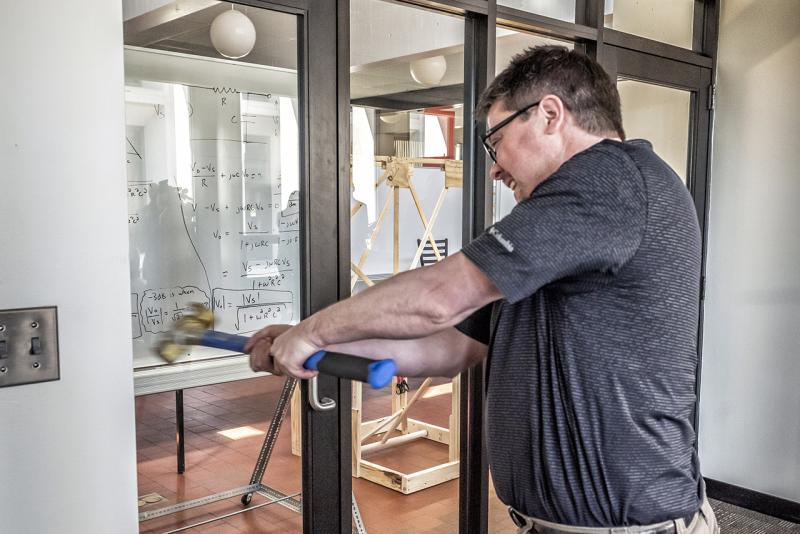
“Students want to be part of something new, something dynamic, something challenging, something hands-on, something fun, something big and bold — and this program has all those elements,” commented Dr. Terry Pilling, Director of Engineering and associate professor of engineering. “We’re excited about what the future holds for our students and the opportunities they’ll encounter with engineering firms locally, regionally and nationally, during their time on campus and after they graduate. So, thank you, to all of the donors for your commitment to our students’ continued development.”
University of Mary announced its new School of Engineering in 2015 and first started admitting students into the program in the fall of 2016. Today, Mary offers civil, mechanical and electrical engineering and continues to be one of the most sought-after programs at Mary with over 90 students and continued growth expected well into the future to meet workforce demands in North Dakota, the region and across the nation.
One of those students fulfilling the critical needs in the industry is senior Michael Gorder of Eagan, MN, who is double majoring in civil engineering and engineering science at Mary. Gorder is a pioneer for the new engineering department. He started when the program started a few years back during the time Pilling was the only engineering professor — and now there are 10 teaching faculty members. Two days from now on Saturday, April 27, Gorder will be the first graduate of the University of Mary’s School of Engineering program.
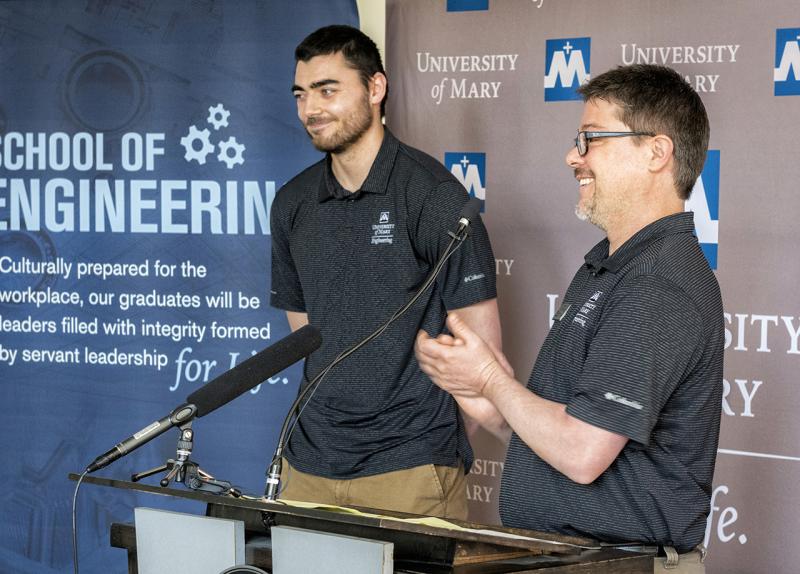
“I am very fortunate to be in the place I am today and am truly honored to be the first graduate to have gone through the University of Mary School of Engineering program,” said Gorder. “It is amazing to see something start from nothing and expand to what it is today and is going to be in the future: the University of Mary will be a well-established engineering program in the Midwest and in America.”
When he came to Mary all he wanted is to be challenged. He got his wish and then some, playing for the Marauders men’s basketball team while pursuing an engineering degree at the University of Mary. That meant homework and more homework, engineering projects, lots of late nights in hotel rooms, even on game day, all while traveling with the basketball team during the fall and spring semesters. In fact, when Gorder started the program, he remembers Pilling giving him a few words of caution that he would never forgot.
“He told me that he never had a student athlete in engineering graduate before because it was too difficult,” Gorder said. “I wanted to prove him wrong and here I am now. I think I proved him wrong. But, I could not have done all of this without Dr. Pilling, all my great professors here along with my amazing classmates, teammates and coaches.”
Following in his dad’s footsteps as a civil engineer, who is the city engineer in Eagan, Gorder will now continue his career full time with Moore Engineering in Bismarck as a graduate engineer.
Evolving from Mary’s popular engineering program is the new and vibrant Miller Insulation construction management program led by professor Matthew Scerbak. Construction management will be housed in the same building and be complementary to the engineering program. According to the Bureau of Labor Statistics, employment of construction managers is projected to grow at 11 percent from now until 2026, faster than the average for all occupations. Much like its civil, mechanical and electrical occupational brethren, the median pay since May 2018 is between $85,000 and $100,000 per year.
Bismarck-based Northwest Contracting is constructing the new School of Engineering facility that will open a little over a year from now in August 2020, just in time for the incoming fall semester class.
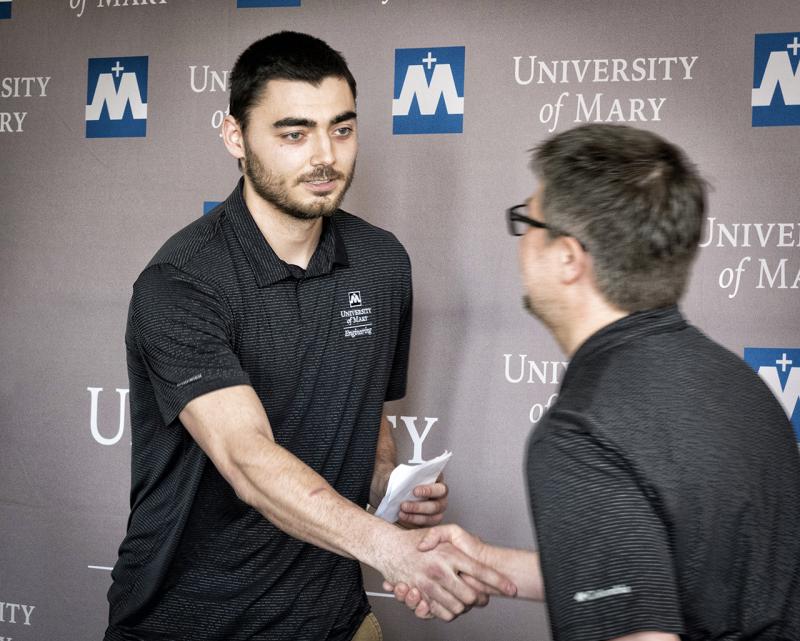
Gorder’s entry into the workforce is an example of what the state is currently looking for—a motivated person who moves to North Dakota for higher education and high-level training, networks with employers, falls in love with the community, graduates, and stays employed full-time with the company while eventually raising a family. That is workforce attraction and development at its finest. Last year, after the governor’s office proclaimed that, “workforce remains our No. 1 barrier to economic growth,” this past January, Energy Transfer donated $2 million to the University of Mary, precipitating the much-needed and quick launch of the university’s new Workforce Development Initiative (WDI).
The goal of the WDI is to bridge the communication gap between educational providers and industry leadership, with the ultimate objective of developing strategies that will lead to filling a workforce shortage and employee retention problem for employers across North Dakota. The University of Mary is leading the program, building on the focus and leadership of the great work of the state of North Dakota.
To help make that happen, the new WDI at Mary initiated a much anticipated survey analysis. Surveyors scoured the Red River Valley in the east all the way to the rolling hills of the west in North Dakota, interviewing more than 60 employers from a wide spectrum of industries. They picked the brains of CEOs, senior vice presidents and human resource departments—asking about their workforce needs, sources in recruiting, connection to higher education, benefits offered, barriers to hiring and recruiting, and any recommendations they may have for higher education and other North Dakota entities looking to help solve these challenges.
While the feedback and findings gleaned from the interviews were wide-ranging, there were consistent themes and overtures to the ongoing pain and pressure points among employers: heavy loan debt is a major concern for today’s workforce, employers need to think of creative ways to incentivize and implement tuition assistance programs; much of the burden of recruiting is left to untrained or understaffed human resources departments, successful companies have a dedicated person solely dedicated to recruiting; employers identified a lack of soft skills in many job seekers; and employers with operations across North Dakota reported the most difficulty filling open positions in the western part of the state.
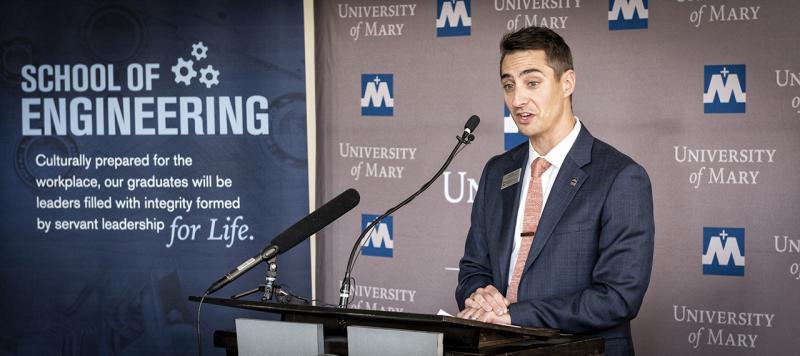
“Interviewing 60 North Dakota employers was an amazing experience that allowed the University of Mary to learn a lot about the state of workforce in North Dakota,” said Brian Opp, University of Mary Workforce Development Strategist. “It became clear that there is no ‘one-size-fits-all’ solution for attracting, developing and retaining workers. Organizations must strive to identify the right mix of promotion, training, development, amenities and more to create a company culture that workers want to be a part of, one that builds loyalty among its workforce. Real opportunities exist for the University of Mary to provide training and development programs that begin to address the gap in in-demand skills identified by employers (e.g. soft skills, project management, leadership and more). This type of training can begin to immediately impact workforce retention and organizational productivity. The University of Mary is excited to partner with North Dakota employers to tackle our workforce challenges.”
While there are obstacles, some employers have already discovered what is working well with recruiting and retaining employees in North Dakota. One company has a recruiter that successfully establishes relationships with high school CTE advisors across the state who act as scouts, identifying students who are interested in the career paths needed by the organization. As students are identified, they are connected to the recruiter. There is considerable appetite among employers interviewed for opportunities to visit K-12 and college classrooms to talk about their organizations and related career opportunities. Employers that reported gaining access to classrooms accomplished it by intentionally building relationships with teachers and professors. Without those relationships in place, employers reported it is almost impossible to gain access to the classroom.
